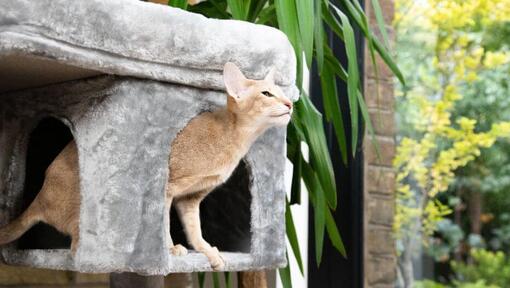
Great news - the time has finally come when you can welcome your new kitten into your home! Just like bringing home a new-born baby, you’ll want everything to be just right so that they’ll settle in quickly and feel right at home.
Making the decision to get a kitten is incredibly exciting as not only will you be gaining a new furry friend, but you’ll also be getting an extra family member! Before bringing a kitten home, you’ll need to spend a bit of time preparing for them. That’s why we’ve created this guide to tell you everything you need to know about getting a new kitten, so you can welcome your new four-legged friend into a warm, friendly environment where they’ll feel safe, comfortable and right at home!
Before your new kitten comes home
Before bringing home a new kitten, there’s a bit of admin for you to do! Here are a few things to get sorted before they arrive:
- If you don’t already have a vet, ask local cat owners to recommend one, and get your new kitten registered straight away. It’s much less stressful to know they’re on the books already, as you’ll need to take them for their kitten vaccinations and neutering. It’s also worth it for the peace of mind in case they’re ever unwell.
- Once you’ve found a vet, chat to them about cat insurance policies that will cover any unexpected veterinary costs.
- While you’re there, arrange to have your new cat or kitten permanently identified with a microchip in case they ever get lost.
New kitten essentials:
Now the admin is out of the way, it’s time for the fun part – shopping for your cute kitten! These are a few of the essentials you’ll need when you get a new kitten:
- A secure cat carrier – cat carriers come in a wide range of sizes so make sure you get one that’s large enough for your cat to be comfortable.
- Two bowls – one for food and one for water. Opt for easy-clean ceramic or glass bowls over metal ones – some cats don’t like reflections or shadows in their bowl as they feed or drink. Make sure it’s wide enough for them to lean in and lap from without their whiskers touching the sides, as this can put some cats off.
- A litter tray and litter. It’s best to use the same type used by the breeder or rescue shelter, at least until they’ve settled in, so that they recognise it – and, importantly, know what to do with it!
- A cat bed – many prefer an igloo-style bed for snuggly security, or one elevated from the ground (e.g. as part of an activity centre).
- Grooming equipment, particularly if they’re longhaired.
- A scratching post made of tree bark or a sisal string-wrapped pole. Scratching helps keep your cats’ claws in good condition and a dedicated post should hopefully distract them from your furniture and carpets.
- A range of cat toys. Their favourite games will be ones that involve you, like dangly soft toys for them to chase and pounce on. This gives them a safe outlet for their natural hunting behaviours.
- Kitten food. Feed your new kitten the same diet they’re used to from their breeder or rescue centre for at least a week, and switch them gradually if you decide to change their food., taking at least a week for the changeover.
Kitten’s first week – how to settle a kitten
Now it’s time for your kitten to come home with you! This is a super-exciting part for you, but remember that your cat may be a little scared – it’s a new situation for them. It’s best to keep everything calm and gentle at first, rather than bringing your kitten home to a loud welcome party.
Car travel can be a bit disorientating and nerve-wracking when bringing a kitten home, so treat their carrier with a calming pheromone spray, and place the carrier on a flat secure space in your car, or on the footwell floor, and cover it with a blanket. You should find that the spray, the darkness and driving carefully helps to keep them calm. Go straight home after you’ve collected them – this isn’t the time to pop to the shops!
Once you’re home, place their carrying basket on the floor, open the door, then let them come out in their own time. They’ll probably have a good sniff around before finding their bed. When they’ve investigated every nook and cranny, give them a little cuddle and see if they need a rest.
Kittens love to sleep, and they need plenty of it. So, after all the excitement of the car journey and exploring their new home, they’ll need a nap. Position your kitten’s sleeping arrangements somewhere warm, quiet and away from draughts and let them get some rest.
If it’s feeding time when you first bring your kitten home, do offer them some food but don't be surprised if they don't eat it. Cats may go off their food for a while if they’re a bit stressed, so give them time to settle in and their appetite should soon return.
Place their litter tray in a quiet, easily accessible area of the room, where they won’t be disturbed. This should be away from their bed and feeding area. Check it at least twice a day, removing solids and soiled litter straight away. Fully empty and disinfect the tray at least once a week to keep it smelling fresh. Ensure you have more than one litter tray around the house to prevent toileting issues especially if you have more than one cat. There should be one litter tray per cat plus one extra.
Keep your new kitten indoors for the first 2-3 weeks to allow them time to get to know you and all the different smells and sounds in their environment. During this time, you’ll need to ensure that there are no open doors or windows which they could sneak through.
They should only go outdoors when they, and you, are feeling confident. If you’re not sure when this will be, speak to your veterinary surgeon who’ll be happy to advise you.
Make sure that you can dedicate time to your cat as they acclimatise to their new surroundings, and help them settle into an established routine. This might mean arranging to work from home or booking a few days of holiday to spend quality time with your new pet – this time is essential not only for helping your new kitten to settle in, but also for establishing your bond.
Once your kitten has found their confidence, they will soon be dashing around the house. Watch your step – they can appear suddenly from nowhere!
They’ll be up for plenty of play but will still need their naps, so give them a nice quiet spot where they can curl up without being disturbed. Remember that everything will be new, challenging and exciting for your new family member, which can be a little overwhelming.
Be prepared that they may be a bit withdrawn to begin with, but they should soon settle in their new home and family life. If they don’t seem to come out of their shell, speak to your vet.
Your kitten’s breeder and your veterinary practice will be more than happy to give you further help and advice about caring for your new cat, their health and settling them in to their new home. All you’ll have to do is enjoy getting to know them, and playing and having fun with your new furry friend
Now you know all about bringing home a new kitten, you’ll probably be wondering about the next steps – read our guide to kitten socialisation so you know how to safely introduce your new kitty to all members of the family.















